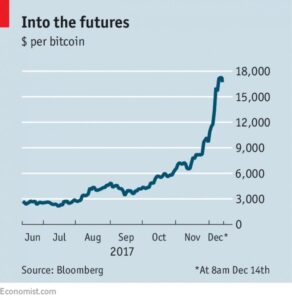Last week the “trillion dollar platinum coin” entered the public lexicon as part of Washington’s debt ceiling debate. It sounds jaunty and paradoxical, but it is a surprisingly serious proposal.
The coin presents a rare opportunity to have a public discussion about the nature of money, something very few people understand. If advocates play their cards (and coins) right, it could even result in the creation of a new and more sustainable monetary system.
Have you heard about the trillion dollar platinum coin? Obama calls it “change he can believe in.”
Pres Obama: “When I said there would be no negotiation on the debt ceiling, well I mint it.”
The coin could feature a picture of a pyramid with an eyeball on top saying “What debt ceiling? I don’t see it” and the slogan “E Pluribus Unum Trillion.”
OK, so here’s a summary of the trillion dollar coin proposal: The Federal government has a self-imposed debt ceiling that must be raised by Congress periodically in order to continue to pay its bills. If House Republicans refuse to raise the debt ceiling, a legal loophole allows the U.S. Treasury to mint a high value (trillion dollar) coin, and deposit it at the Federal Reserve, where the Treasury’s account would be credited, this allowing government borrowing to continue. In the narrowest strategic reading, the coin could buy the president time to reach an agreement with Congress on the debt ceiling. Similarly, the president could threaten to use the coin unless Congress gives the president the authority to unilaterally raise the debt ceiling. In return, Congress could revoke the ability to mint future trillion dollar coins. In these scenarios, the status quo is preserved, and no major changes are implied to the existing monetary system.
Between jokes, blogs have assessed the coin’s legality and constitutionality , and the coin seems to pass both tests. But the coin idea raises bigger — some might say “richer” — issues and even suggests some solutions.
Critics of the trillion dollar coin are often using gold-standard thinking in a fiat currency world. Banking interests and conservative “deficit hawks” want to scare Americans into rolling back entitlement programs, focus the tax burden on the lower classes, and preserve the banking industry’s profits. The coin has other ideas. It is telling us that we can afford government programs, whether it is Social Security, rebuilding crumbling infrastructure, or protecting the population from climate change. The coin offers the choice of stimulus over austerity.
Second, the coin illustrates the distinction between debt-backed versus debt-free money, and interest-accumulating versus interest-free money, for both federal budgeting and the entire economy. In 1913, the U.S. government outsourced the money creation power to the Federal Reserve, which is comprised of a cartel of banks. Federal Reserve Notes are created through bank loans and accumulate compound interest that must be paid back over time to the lending banks. Those interest payments mean that everyone, including the Federal Government, pays rent on money created by the Federal Reserve System. Unlike the Federal Reserve Notes, the trillion dollar coin is debt-free and interest-free. The government has disempowered itself of the benefits of “seignorage,” but the coin offers to reinstate that power.
Third, the coin provides an entry point for broad and important discussions about monetary reform. Such discussions could even prompt Congress and the president to begin work on a monetary reform bill in 2013, following a template supported by the American Monetary Institute. Such a bill could:
- Change the way the Federal Reserve handles U.S. Treasury securities. For example, in the course of its regular monetary functions, the Fed could retire U.S. Treasury securities instead of letting interest on the debt accumulate.
- Repeal the congressional mandate for the Treasury to issue debt when it deficit spends. Instead, the Treasury could be allowed to spend money into circulation directly, or use debt-free instruments (of which the coin is one example) in its money creation process (with or without the Federal Reserve).
- In the transition to a new interest-free new monetary system, press the “reset” button by canceling (a financial term for this is “winding down”) all debts following the Biblical tradition of the Debt Jubilee. You can already hear the college graduates cheering, and the Wall Street Banks writing checks to their lobbyists to block it.
- Convene a study group or commission to investigate using carbon emissions permits under a declining cap as a “backing” for the future currency. In a world of increasingly restricted carbon emissions, the ability to emit may become one of the most valuable commodities on the planet. Some analysts believe that this linkage between carbon and money is already implicit in the current petro-dollar cycle, and that fluctuating and escalating oil prices will be a major factor driving the economy’s boom and bust cycle for decades to come. Backing money with carbon along the lines of the Energy-backed currency unit proposal floated by Richard Douthwaite of the Foundation for the Economics of Sustainability in 2006 could create a stable currency regime as industrial economies decarbonize. Now is a good time to begin this process, while the U.S. dollar is still the world’s reserve currency, and before the euro recovers from its woes or the OPEC nations unite behind another currency such as China’s.
Finally, once the trillion dollar coin’s work is done in the debt ceiling debate, it could be “spent” into circulation as a “citizen’s dividend,” as the first installment of the people’s new seignorage royalties from the money commons. At 311 million Americans, that would be about $3,200 per person. Obviously, the new-found power of money creation has its limits, and safeguards should be built in to prevent inflationary spending once the current debt deflation subsides.
Two contenders for the face of the coin are President Andrew Jackson and President Abraham Lincoln. Jackson was the only president to have retired all U.S. debt. Lincoln would be appropriate because he issued a debt-free fiat currency, Greenbacks, to finance the Civil War. Lincoln has a public relations edge over Jackson, with his Steven Spielberg movie on track to win Best Picture this year, and he has a backup plan as well, in case Treasury Secretary Geithner decides to ship 100 trillion pennies over to the Fed instead.






